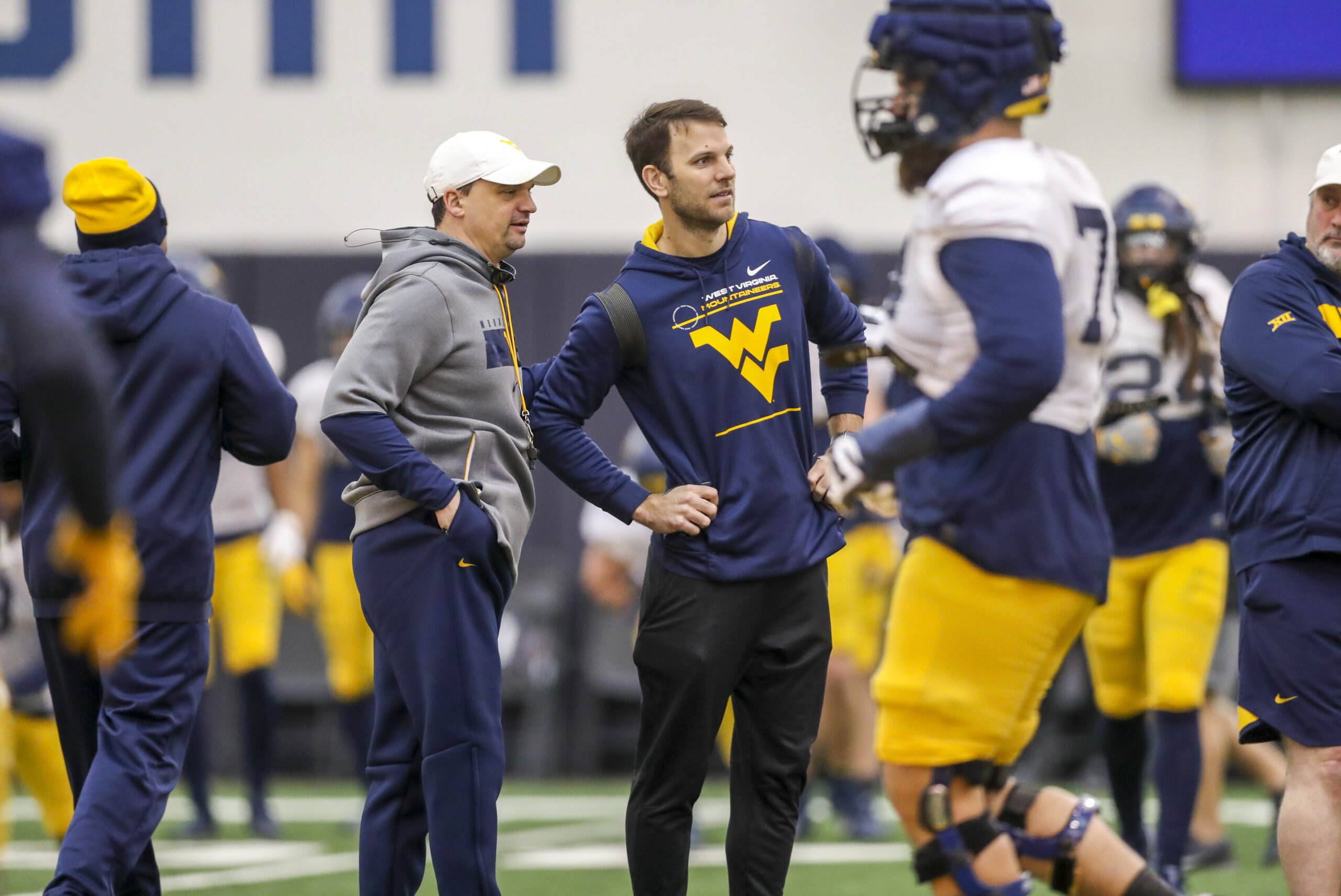MORGANTOWN, W.Va. — When Graham Harrell was hired to coordinate West Virginia’s offense two weeks into the 2022 offseason, the move was viewed as somewhat of a necessity for a unit in need of change.
The Mountaineers had just finished a 6-7 season that concluded with one of their worst offensive showings in three seasons under head coach Neal Brown, an 18-6 loss to Minnesota in the Guaranteed Rate Bowl.
“For the first time in my career as I looked at it, I said, ‘Hey, we have just not been good at it and good enough offensively,’” Brown said on January 10, the night WVU announced Harrell’s hiring.
The loss to the Golden Gophers marked the sixth time in 2021 that West Virginia failed to score more than 20 points and the 17th time the Mountaineers didn’t surpass that total in Brown’s 35 games at WVU.
Brown assumed responsibility for the unit’s shortcomings.
“I have been serving dual roles,” he said back in January. “I have not only been the head coach, but I have been the offensive coordinator. It has really been my offense. Our lack of production offensively is really on me.”
One month later, Gerad Parker, the Mountaineers’ co-offensive coordinator in 2020 and 2021, left for a position on Notre Dame’s staff.
That leaves the offensive plan and play-calling up to Harrell. It also changes Brown’s assignments and operations during the course of a game, which the head coach acknowledged during his Monday media session.
“He’ll call it. If I feel strongly about something, I’ll give him some ideas, but for the most part, I want to be a resource and ask questions,” Brown said. ”If he wants to ask me something, he can.
“That’s something we’ve been working on and that’s something that doesn’t get talked about a lot, but the chemistry on game day, you have to practice when you have new staff members, because it’s different. So we’ve been intentional about doing that in the spring and all through fall camp.”
Having less control over the offense should free Brown to focus more on other aspects, such as clock management, timeout usage and analytical adjustments.
“As a head coach, you kind of train yourself as well. You watch some games,” Brown said. “Even on Saturday, I was watching one game and I’m sitting there going, ‘OK, with this amount of time, this is how they have to use their timeouts.’ No one thinks about it, but if you go nine months without doing something, you’re going to be a little rusty.
“There’s some preparation for the coaches, and the head coaches included, getting ready for an opener. That’s why I’m kind of jealous of the NFL guys. They get three preseason games and if you screw up, nobody knows, because nobody is really watching.”
Harrell and Brown will communicate through headsets in Thursday’s season opener at Pitt. Rather than being on the sideline at field level, Harrell will take in the game from a coaches box overlooking the action at Acrisure Stadium.
It’s a vantage point Harrell says he’s preferred since a discovery he made in 2016, during his first of three seasons at offensive coordinator at North Texas.
“I was on the field my first year at North Texas, and then you’d go watch the tape on Sunday and be like, ‘Well it would’ve helped to have seen that,’” Harrell said.
Harrell recognizes there are advantages that come with being on the field as a coordinator. However, he believes they don’t outweigh the pros of seeing the game from much higher up.
“I like being down there and I like being around the guys and being able to look in the quarterback’s eyes,” Harrell said. “There’s definitely some advantages of being on the field and being able to talk to the unit.
“I liked that side of things, but it’s easier to have a guy that can communicate with the offense than it is to get a guy up top that can give you really clear information and tell you what you’re trying to see. That’s why I went up. It’s easier to get a guy to manage what you’re doing downstairs than it is to manage what you’re doing upstairs.”

